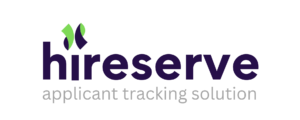Read on if you would like to learn:
- The definition of ‘preboarding’, and what differentiates it from onboarding
- Why preboarding is important
- Preboarding best practices
- Example preboarding checklist to help you create your own
What is the definition of ‘preboarding’?
Preboarding is the time between when a new employee accepts their job offer and their first day, which is when official onboarding begins. This period could span from a few weeks to a few months.
Why is it important?
Preboarding plays an important role in creating a sense of excitement and positivity for your new employee around starting their new role. It can curb any anxiety they may have around no longer being an employee in their current familiar organisation, and help them get to know your company culture better before the information avalanche that comes with the onboarding process.
Even if you feel confident that your job offer is substantially more appealing than a new hire’s current situation, big changes can still create worry, and they’ll be on the look out for any sign of trouble. Ensuring you create a memorably enjoyable preboarding experience which seamlessly phases into an positive employee experience prevents a new hire deciding to stick with the devil they know.
An effective preboarding process also feeds into your employer brand. In any industry, word of mouth can be a major player in people’s impression of an organisation. If you want to attract talent and increase your chance of referrals through your new employee, now is the time to prove yourself through successful employee preboarding, as well as onboarding.
Preboarding effectively can also help with the future retainment of your new hire when then become an official employee. Preboarding is essentially beginning the process of employee engagement before a new hire begins their tenure with you, as many of the preboarding best practices look very similar to techniques HR may use to increase employee engagement.
A few tips for making sure your preboarding efforts are successful:
Make sure to reflect your organisation’s culture
When anyone starts a new job, we all wonder if the impression we got of the culture and what it’s like to be an employee at the hiring organisation during the interview process from hiring managers, recruiters, and HR was accurate.
Whether it’s through testimonials from their future team members or getting them signed up to an internal newsletter, it’s important to prove during your employee preboarding journey that they made the right call choosing you as their next employer. It’s easy to forget to tend to this in the gap between an accepted offer and onboarding, but it truly cannot be neglected!
Start preboarding right after they accept your job offer
The first day of a new job can come around quickly, so it important to be ready to start preboarding your new hire ASAP.
While your new hire may have gotten a taste of your company culture during the hiring process, the preboarding process is a great opportunity for getting them better acquainted with it. Nobody wants to have the initial excitement of a new job immediately followed by a lack of communication.
Don’t overwhelm your new hire
Be aware your new hire is likely still wrapping up work in their current role, which can be a stressful process, taking up a lot of time and headspace. Even if they are not currently an employee at their previous company, they may have chosen to spend a few months focused on family, hobbies, or rest.
For this reason, if you include any time consuming activates in your preboarding, such as inviting the new hire to a company event, you should stress that attendance is optional, and that there will be no problem if the new hire does not have the time to attend. Employee preboarding is not the time to overload a successful candidate!
Smoothly phase preboarding into onboarding
Some may view popular preboarding efforts as falling into the category of being onboarding – which in many ways can be a good thing! One of the top goals of preboarding should be to prepare your new hire for their new role as much as possible so that they can feel prepared for their first day as an employee at your organisation, and ensure the onboarding process doesn’t come as a shock.
This doesn’t mean intense training should be the first thing on your checklist at all – but rather that you offer them ample information and awareness of your organisation and their role in good time.
Here’s an example checklist of what you could do to create a great preboarding process:
- Sending a welcome email to your new employee
- Sending your new hire a welcome gift – such as company merch
- Setting up a call for the team members to introduce themselves and chat with the new hire
- Sending an outline of what their first day in their new role will look like well in advance
- Create and FAQ (Frequently Asked Questions) document to share with the new employee
- Make sure they have all their work tech sorted before their first day to avoid issues swallowing their time when they become an official employee
- Offer for HR and the hiring manager to be available for calls if they need to discuss anything
- Invite them to any employee events taking place before (Christmas party, awards ceremony, etc.)
- Offer a virtual or real life tour of the office space the new employee would use
- Share a checklist with them of everything they may need to bring to their first day as an employee at your company
- Send a ‘see you tomorrow!” message the day before they start
To conclude…
A strong preboarding procedure can tie your whole recruitment process together, and links to more than you may think. It plays a role in candidate experience (which is easy to forget about after completing the interview process and having the job offer accepted!), as well as the engagement of your future employee. It’s easy to feel the need to shift focus straight from recruitment to onboarding, but employee preboarding is a necessary bridge between these two worlds, and cannot be overshadowed by the onboarding process.
Both the candidate selection process and onboarding can be rigorous checklist processes, focusing on the practical side of a new hire. While these are necessary and can still be made enjoyable for your new hire, employee preboarding is an opportunity to prove that all your conversations around the great role and company culture were genuine. When your talented candidate becomes a seasoned employee, they will not forget the experience they had going through your preboarding checklist.


